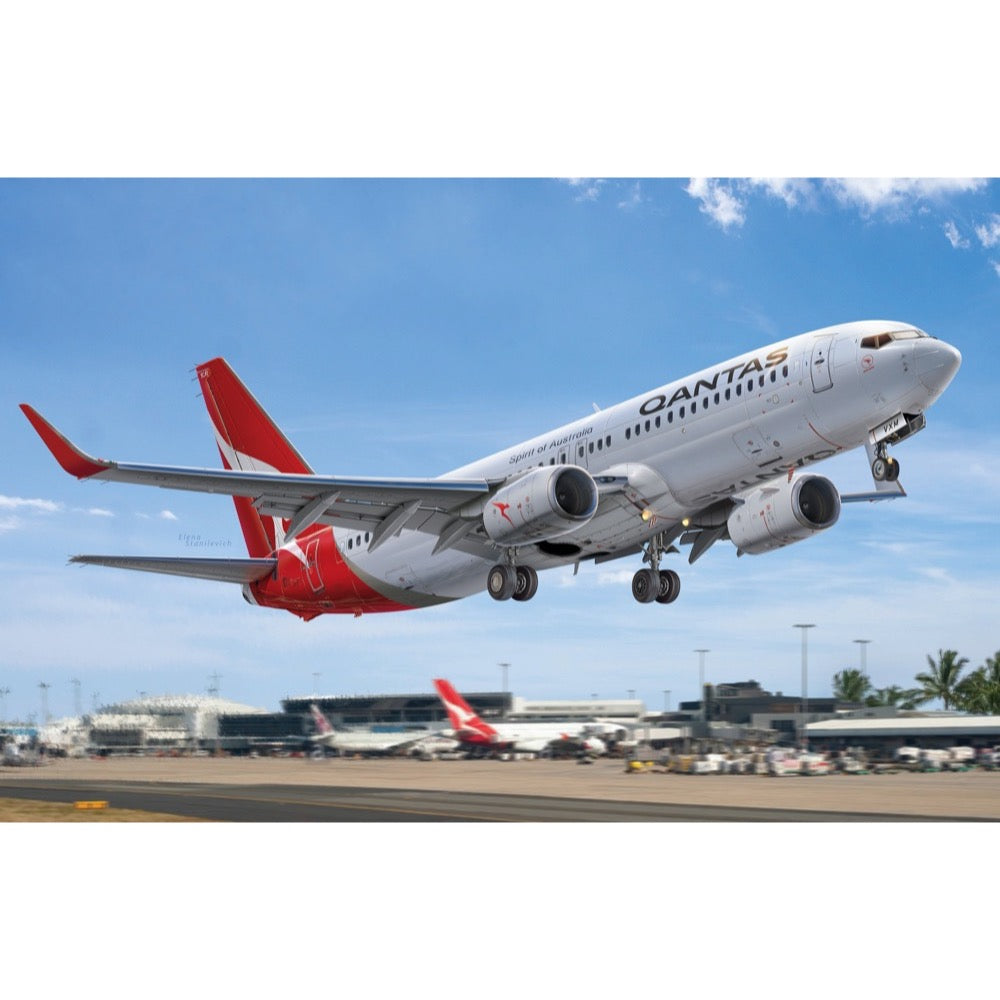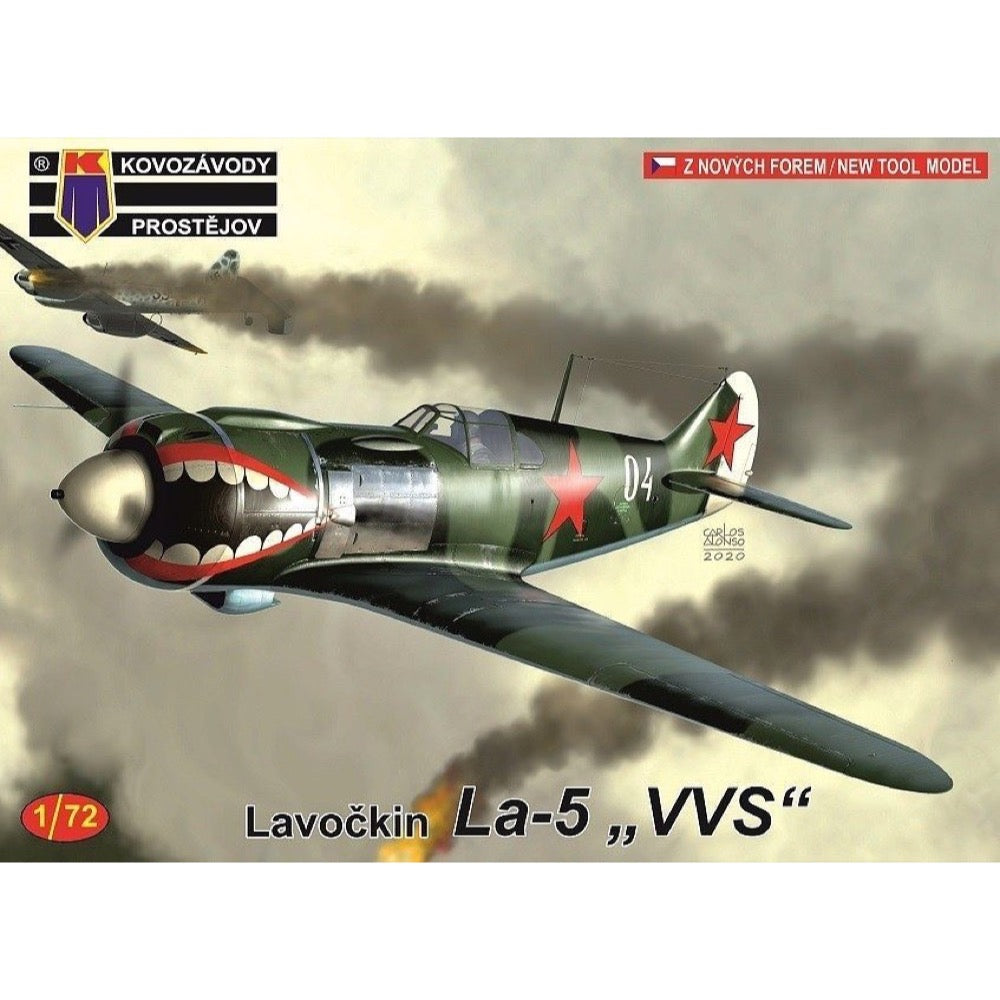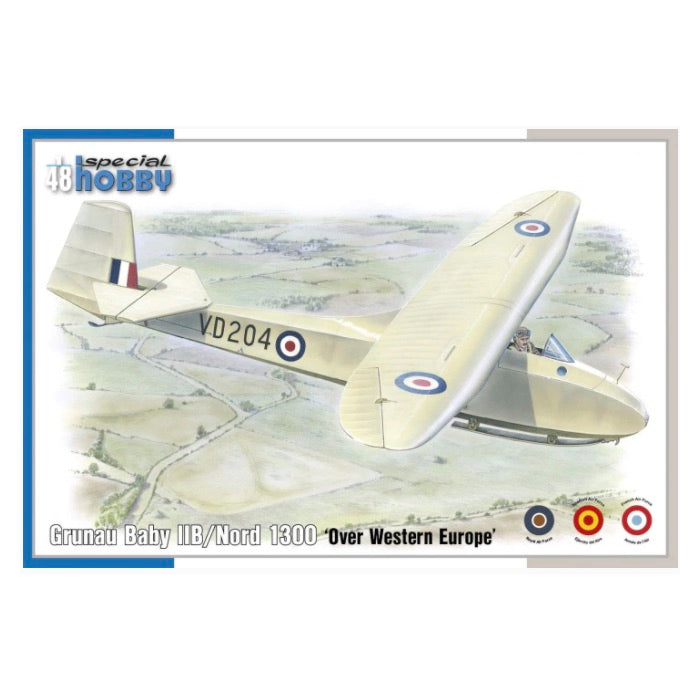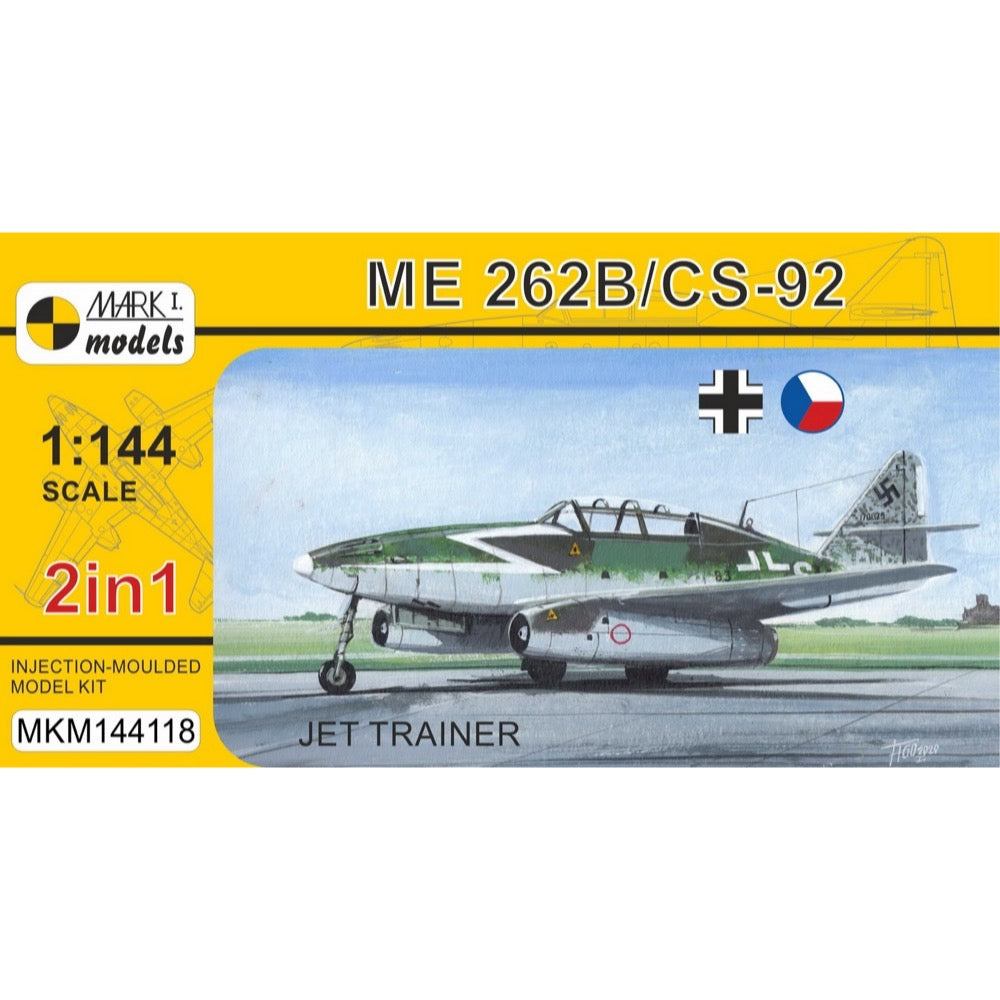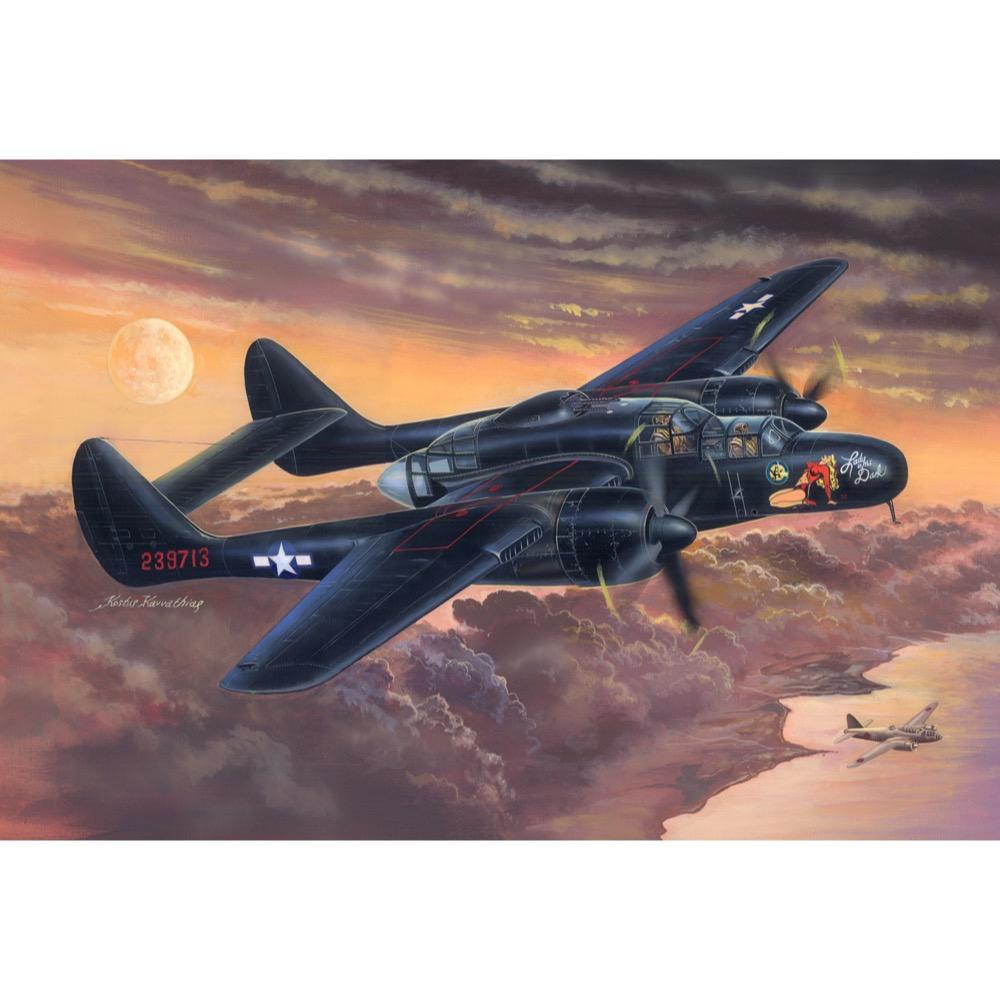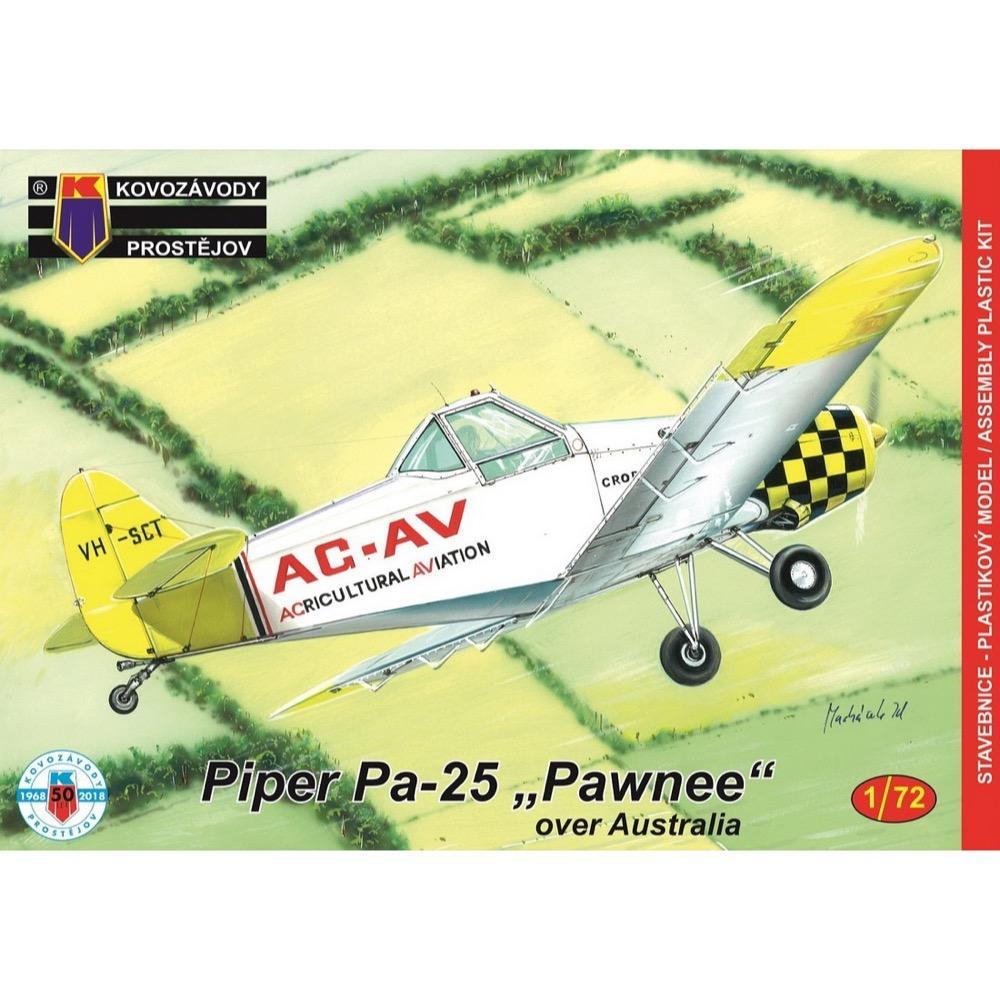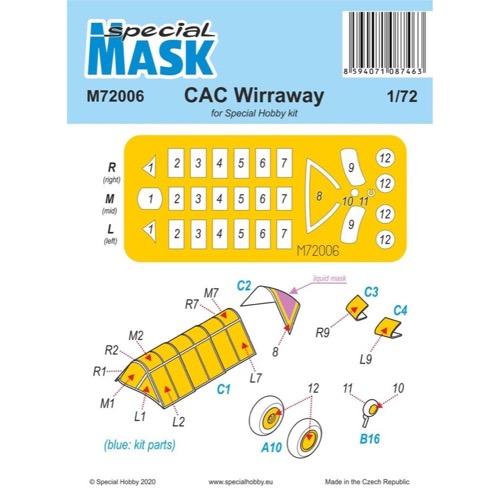
Special Mask M72006 1/72 CAC Wirraway Masking Set
4.00
$
<p>Pre-cut spray mask for the clear parts and undercarriage wheels for all Special Hobby releases of the CAC Wirraway</p>
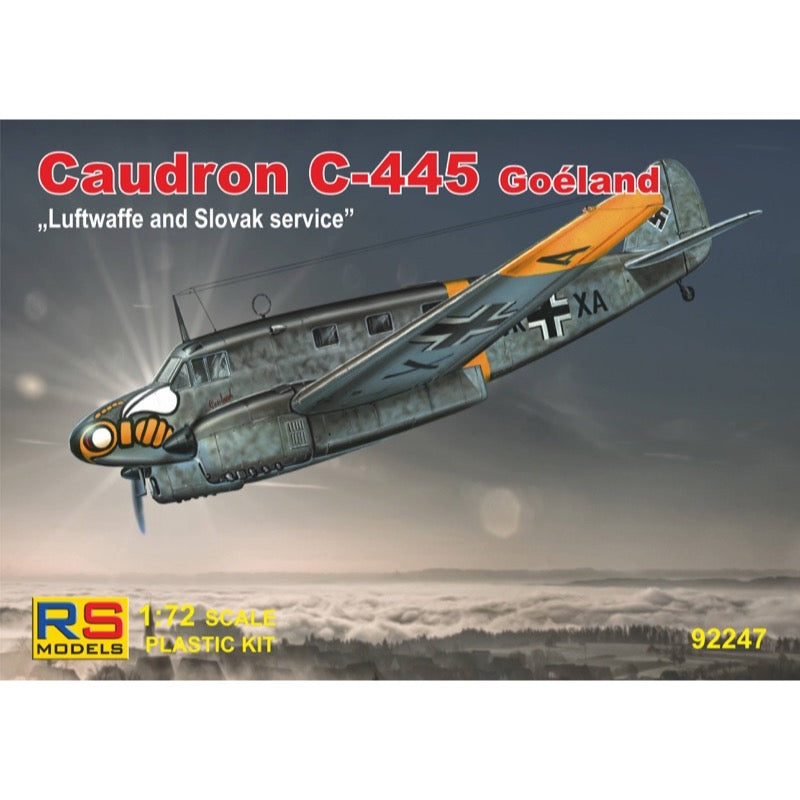
RS Models 92247 1/72 Caudron C-445 Goeland Luftwaffe and Slovak Service
23.00
$
<p>RS Models 92247 1/72 Caudron C-445 Goeland Luftwaffe and Slovak Service Plastic Model Kit</p>
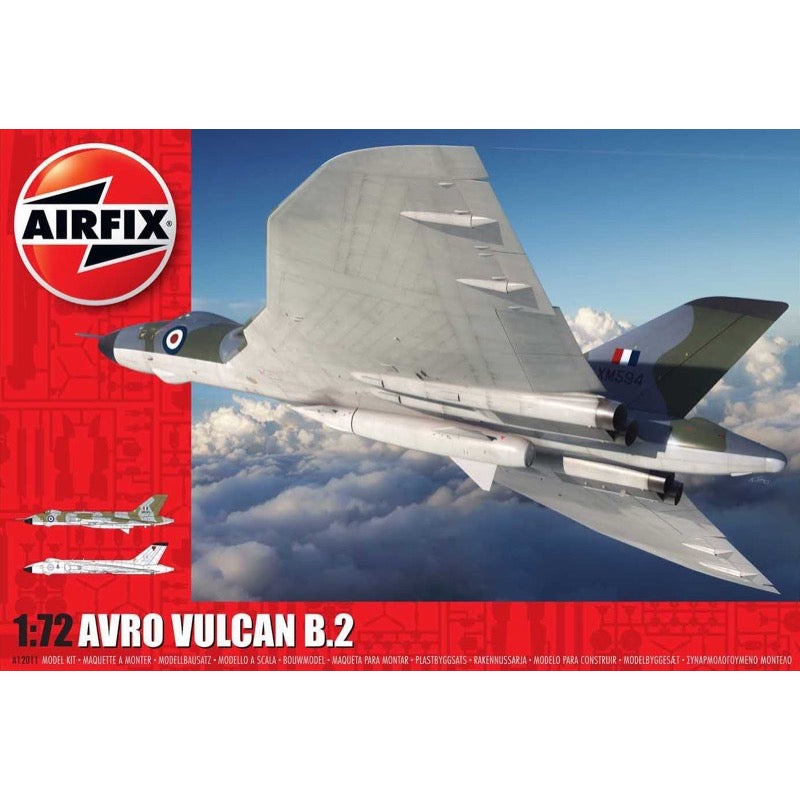
Airfix A12011 1/72 Avro Vulcan B.2
56.00
$
<h3>Avro Vulcan B.2</h3>
<div>
<p>The Vulcan has been designed with the modeller in mind. The wings, historically in three pieces, now come in two to simplify and fortify your build. Through every step of the design process, our developers continued to keep modellers at the forefront of every choice they made.</p>
<ul>
<li>1:72 Scale</li>
<li>Wingspan: 470 (mm)</li>
</ul>
<h4>Scheme option A - Avro Vulcan B.Mk.2 XM594, The Scampton Wing</h4>
<p>From the mid 1960s, Scampton’s Vulcans gave up their iconic white anti-flash paint scheme for one which featured standard RAF camouflage on all upper surfaces, reflecting the tactical change from high to low altitude operations. Significant advances in Soviet SAM missile capability meant that Vulcan crews could no longer be expected to safely conduct their original high altitude Blue Steel delivery missions and were forced to ‘head for the deck’. </p>
<p>Scroll down for the paint schemes and a comprehensive list of paints needed. </p>
<h4>Scheme option B - Avro Vulcan B.Mk.2 XM602, RAF No.12 Squadron</h4>
<p>As the massive construction hangar doors at Avro’s Woodford factory aerodrome were pushed open on 30th August 1952 and Avro Vulcan prototype VX770 was wheeled out onto the hardstanding, she must have made for an awe-inspiring sight. Looking absolutely resplendent in its all-over white <em>‘Anti-Flash’</em> paint finish and proudly wearing its Royal Air Force insignia, what the Avro engineers had managed to produce was not only the world’s first delta bomber, but also the most advanced bomber in the world at that time.</p>
<p>Occupying a significant position in the history of post war British aviation, the Avro Vulcan was without doubt one of the most distinctive aircraft ever to take to the skies, with its huge delta wing profile becoming almost as iconic as the elliptical wing of the Supermarine Spitfire. Built to satisfy an extremely demanding Air Ministry requirement for a fast, high altitude strategic bomber, capable of carrying a special payload of 10,000 imperial pounds in weight (a nuclear device), the new aircraft was intended to serve as an airborne deterrent to any future military threat against the UK, with the required specifications representing a 100% increase in the capabilities of any previous British bomber aircraft. When the Vulcan made its maiden flight in August 1952, the Avro team were well on the way to presenting the Royal Air Force with not only the worlds first delta bomber, but also one of the worlds most effective strike bombers.</p>
<p>Interestingly, all this was achieved just nine years since the Avro Lancasters of RAF No.617 Squadron had launched their famous raid against the great dams of the Ruhr Valley. As the Avro Vulcan entered squadron service with No.83 Squadron at RAF Waddington in July 1957, Britain now possessed the fastest nuclear capable bomber in the world. It seems strange to describe an aircraft which possessed such potential for untold destruction as Britains most effective peace keeping asset, however, that is exactly what the Vulcan turned out to be. Throughout the aggressive posturing of the Cold War, the Warsaw Pact nations were in no doubt that if they dared to launch an attack against a NATO member country, the consequences of the inevitable retaliatory strike would be catastrophic. Without Doubt, during the early years of its service career, nothing represented this doomsday scenario more effectively than the mighty Avro Vulcan.</p>
<p>As the Royal Air Force exhaustively trained their new Vulcan crews to provide Britain with an effective Quick Reaction Alert strike force, Avro engineers were already working to improve the capabilities of their original, iconic design. In order to ensure the aircraft continued to maintain its effective deterrent threat and stayed one step ahead of advances in Easter Bloc fighter and surface-to-air missile technology, designers incorporated developments which endowed the aircraft with greater range, speed and altitude performance. The installation of more powerful versions of the Vulcans Bristol Olympus engines would result in a number of unforeseen stability issues with these first bombers, which concerned designers enough to necessitate a re-design of the original wing shape.</p>
<p>By the time the definitive B.2 variant of the Vulcan entered service, the aircrafts wing area had increased significantly and although still classed as a delta, would look quite different from the first bombers which entered service. To cope with the increased power availability from subsequent engine upgrades and to cure the instability issues of the original straight wing design, the B.2 wing had two defined kinks in its leading edge, well forward of the profile of the original wing design. Rather than detract from the pleasing aesthetics of the early Vulcans delta wing, the B.2 actually enhanced the profile of the aircraft and even though these changes were obviously made for reasons of operational effectiveness, as opposed to appearance, the B.2 would go on to be considered the most famous (and most numerous) of all the RAFs Vulcans. The service introduction of the Vulcan B.2 in July 1960 coincided with the availability of more capable nuclear weapons for the V-bomber force, both in number and destructive potential. It would also bring about a change in thinking regarding the delivery of such weapons, as significant advances in Soviet anti-aircraft technology now threatened the success of a free-fall gravity bomb mission. A significant new weapon would have to be developed in order to maintain the deterrent threat of the Vulcan and its V-bomber partners.</p>
<p>Developed to maintain the validity of Britain's nuclear deterrent threat, designers at Avro produced the powerful Blue Steel air-launched, nuclear stand-off missile, which would allow V-bomber crews to launch their attacks 100 miles away from their intended target and out of the range of Soviet surface-to-air missile batteries, allowing crews valuable additional time to avoid the resultant blast. Further boosting the effectiveness of the V-bomber force, the arrival of Blue Steel raised the nuclear stakes in Britains favour once more and would have caused much consternation amongst the Warsaw Pact nations.</p>
<p>The responsibility of providing Britain's strategic nuclear deterrent passed to the submarines of the Royal Navy in July 1969 and saw the RAF performing its final V-bomber Blue Steel mission late the following year. Although taking on a more conventional strike role, RAF Vulcans would retain a nuclear capability and maintain their position as one of the worlds most effective bombers for the next fourteen years, before finally being withdrawn from service. Due to the affection in which this aircraft was held by the British public, the Vulcan Display Flight was almost immediately formed to operate one aircraft on the UK Airshow circuit for a further nine years, before itself being disbanded.</p>
<p>To the amazement of the historic aviation world, the last flying Avro Vulcan, XH558, the aircraft which had previously served as the Vulcan Display Flight aircraft, triumphantly returned to the air once more, this time in the hands of a civilian organisation in October 2007. Over the course of the next eight years, the Vulcan thrilled millions of people around the country, becoming something of an aviation national treasure a relic of the Cold War which was held in great public affection.</p>
</div>
<h4>Includes</h4>
<ul>
<li>Sprues</li>
<li>Decals</li>
</ul>
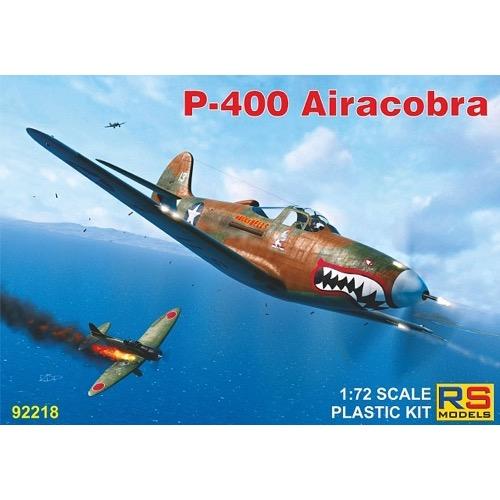
RS Models 92218 1/72 P-400 Airacobra
17.00
$
<p>High quality, precision plastic model kit. Paint and glue not included. Requires assembly and painting. For intermediate to advanced skill modellers.</p>
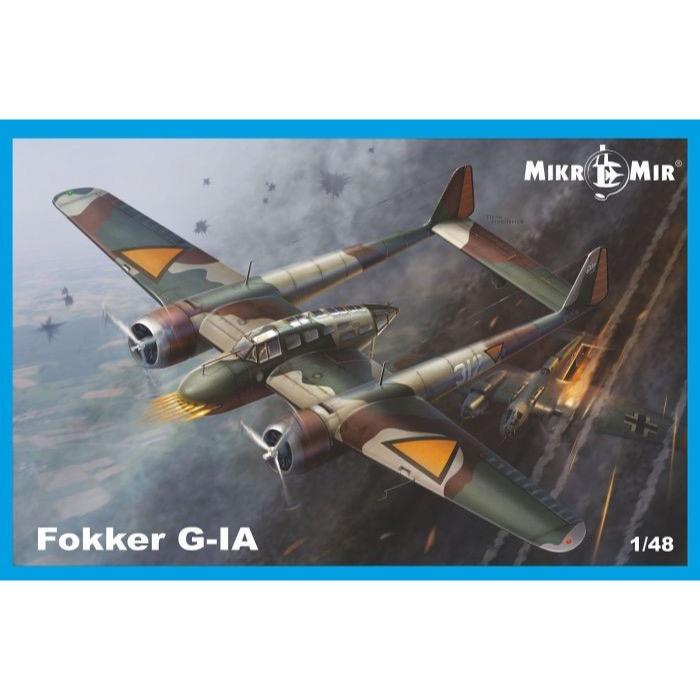
Mikro Mir 48-016 1/48 Fokker G-1A Dutch Twin Boom WW2 Aircraft
58.00
$
<h3>This is a beautifully crafted 1/48 scale model kit of the Fokker G-IA, which was a dutch double-engine fighter aircraft also known as a bomber destroyer.</h3>
<p>The kit contains one plastic model kit with photo-etched parts, film, and decals. Glue and paint are not included. May contain small parts. Not suitable for children under 10 years old.</p>
<p>In November 1936 the prototype Fokker G.I heavy fighter caused a sensation when exhibited at the Paris Air Show, which in those days did not have a flying display but only a static exhibition in the Grand Palais. The concept of a twin-boom twin-engined fighter (later adopted for the Lockheed P-38 Lightning) was revolutionary at the time.</p>
<p>After the Show, the Fokker G.I was taken to Eindhoven airfield, from where its first flight was made on 16 March 1937. The G.I was then powered by two 750 hp (559 kW) Hispano-Suiza 80-82 counter-rotating radial engines, but problems with these prototype units resulted in a change to similarly rated Pratt & Whitney SB4-G Twin Wasp Juniors during reconstruction, after the G.I suffered brake failure and rammed a hangar at Schlphol on 4 July 1937.</p>
<p>Demonstrations had already been given to the Netherlands army air corps at Soesterberg, and considerable interest was shown, resulting at the end of the year in an order for 36 aircraft to be designated G.IA. In order to ease the spares situation, it was stipulated that these must have 830 hp (619 kW) Bristol Mercury VIII engines, which were also to power the T.V bomber and D.XXI fighter already on order for the air corps.</p>
<p>This decision brought delay because although G.IA production began immediately there was a hold-up in the supply of engines. Thus the first production aircraft to fly, actually, the second of the batch, became airborne only on 11 April 1939. It remained with the makers for production testing and modifications, and the first aircraft was delivered to Soesterberg on 10 july 1939. Possibilities of export orders followed the aircraft's debut at Paris and a number of foreign pilots came to Fokker to fly and evaluate the G.lB export version. Orders were placed by Finland (26), Estonia (9), Sweden (18) and Republican Spain(12), while a licence-production agreement was in negotiation with Denmark and another with Manfred Welss in Hungary. The Dutch embargo on weapon exports before World War II killed the Spanish order, but the Finnish batch was under construction when war broke out and a ban was then placed on its export. After lengthy negotiations a contract was drawn up to permit the G.IB's export on 17 April 1940, by which time 12 had been completed, apart from armament.</p>
<p>When Germany attacked the Netherlands on 10 May 1940, 23 G.Is were in service. 12 with the 4th Fighter Group at Alkmaar and 11 with the 3rd Fighter Group at Rotterdam/Waajhaven, The G.Is were successful in destroying several Junkers Ju 52/3ms during the early stages of the German invasion, but by the fifth day, when Dutch resistance ended, only a single example remained airworthy.</p>
<p>The Germans occupied the Fokker factory, ordering completion of the 12 G.Is intended for Finland, and these were used subsequently by the Luftwaffe as fighter trainers. Test flights from the factory were made under German supervision, but on 5 May 1941 two Dutch pilots succeeded in evading an escorting German-flown G.I and escaped to England. Their G.IB was taken to the Royal Aircraft Establishment, Farnborough, for examination, and used subsequently by Phillips and Powis (Miles Aircraft) at Reading for research into wooden construction.</p>
<h3>Specifications</h3>
<ul>
<li>Length, mm: 226</li>
<li>Glue and paints are not included</li>
</ul>
<h3>This set includes</h3>
<ul>
<li>11 sprues with parts</li>
<li>1 frame of transparent plastic (canopy)</li>
<li>decal (sticker)</li>
<li>photo-etched parts</li>
<li>scheme for painting model</li>
<li>detailed instruction</li>
</ul>
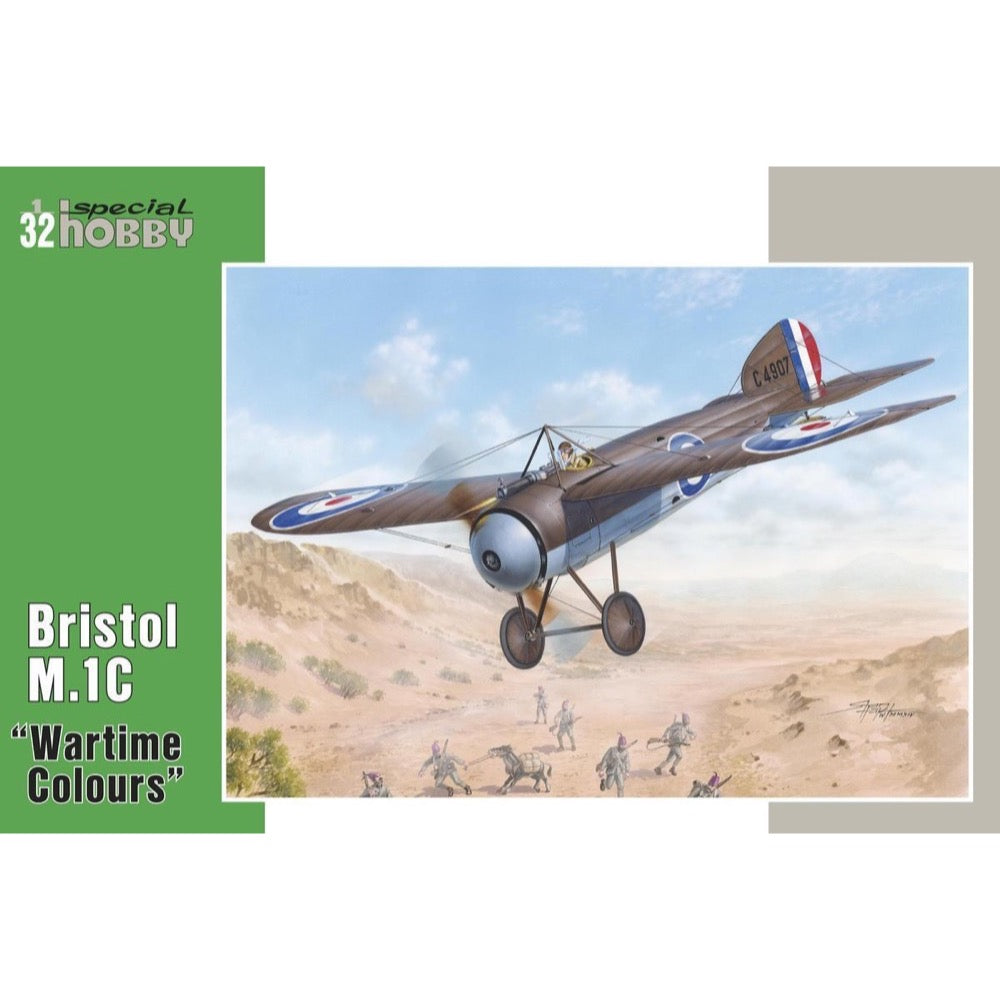
Special Hobby SH32057 1/32 Bristol M.1C Wartime Colours*
35.00
$
<p>The kit contains three sprues with plastic parts. The sprue with big parts was prepared using short-run technology while the small part sprue was 3D designed and is injected from the metal mould in excellent quality. Of very same quality is the 3D designed and resin cast seat; real aircraft seat featured wicker woven back rest. Another resin part is the dynamo airscrew; other small parts are in the photo-etched parts. Decals included offer markings for three camouflaged machines that flew during the Great War. Two of them served in Mesopotamia and Macedonia the third one flew over the Western Front.</p>


